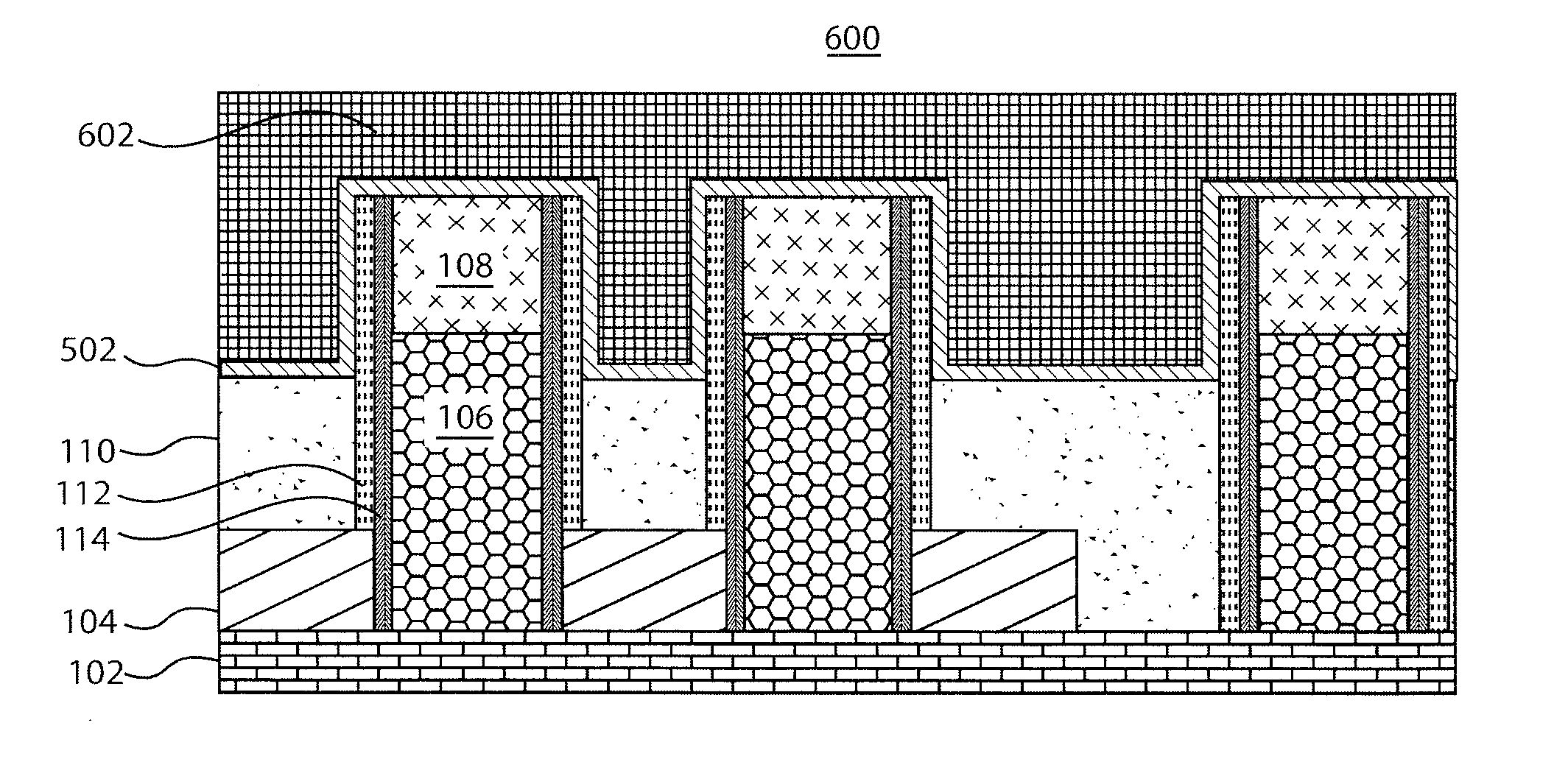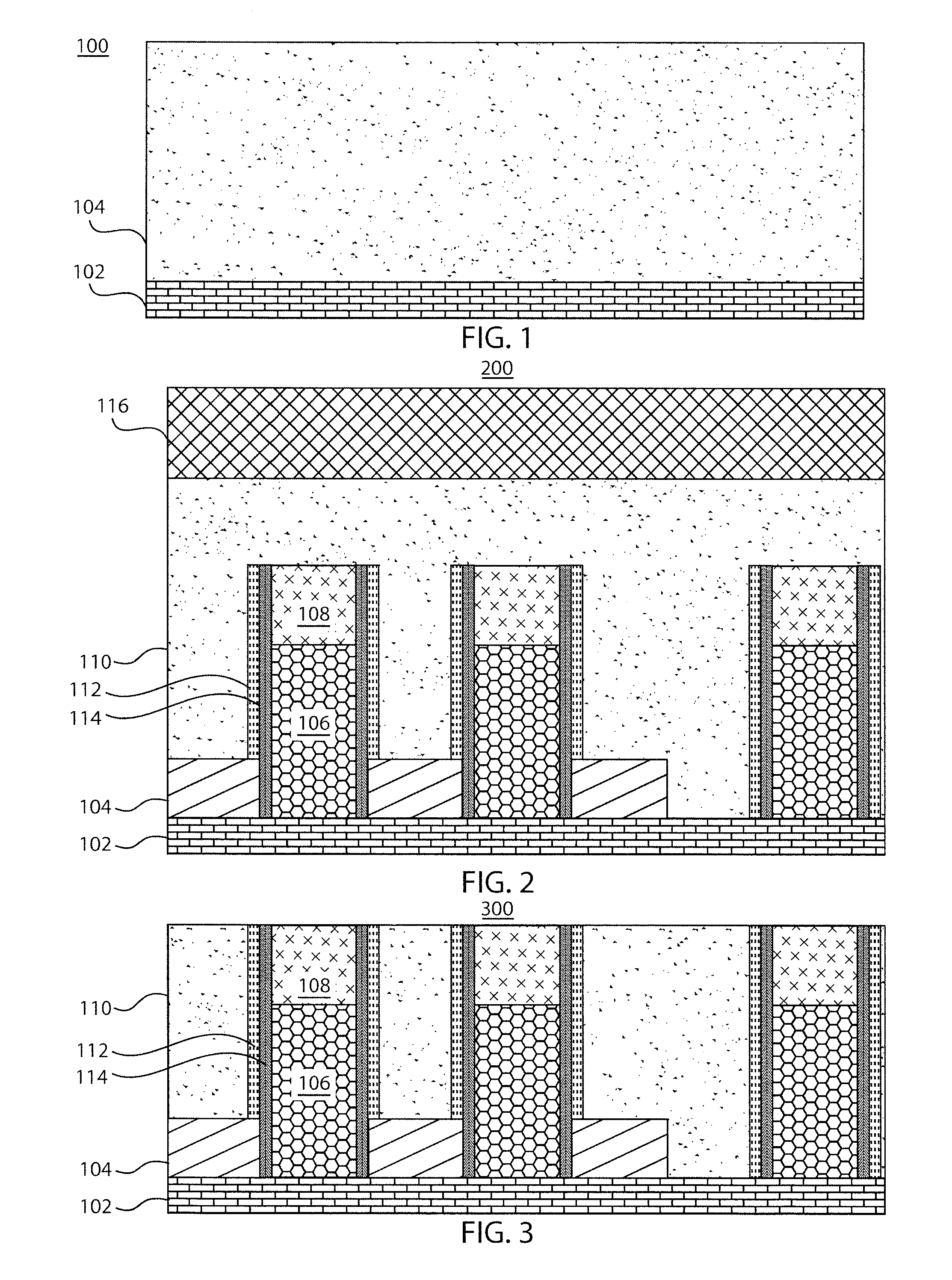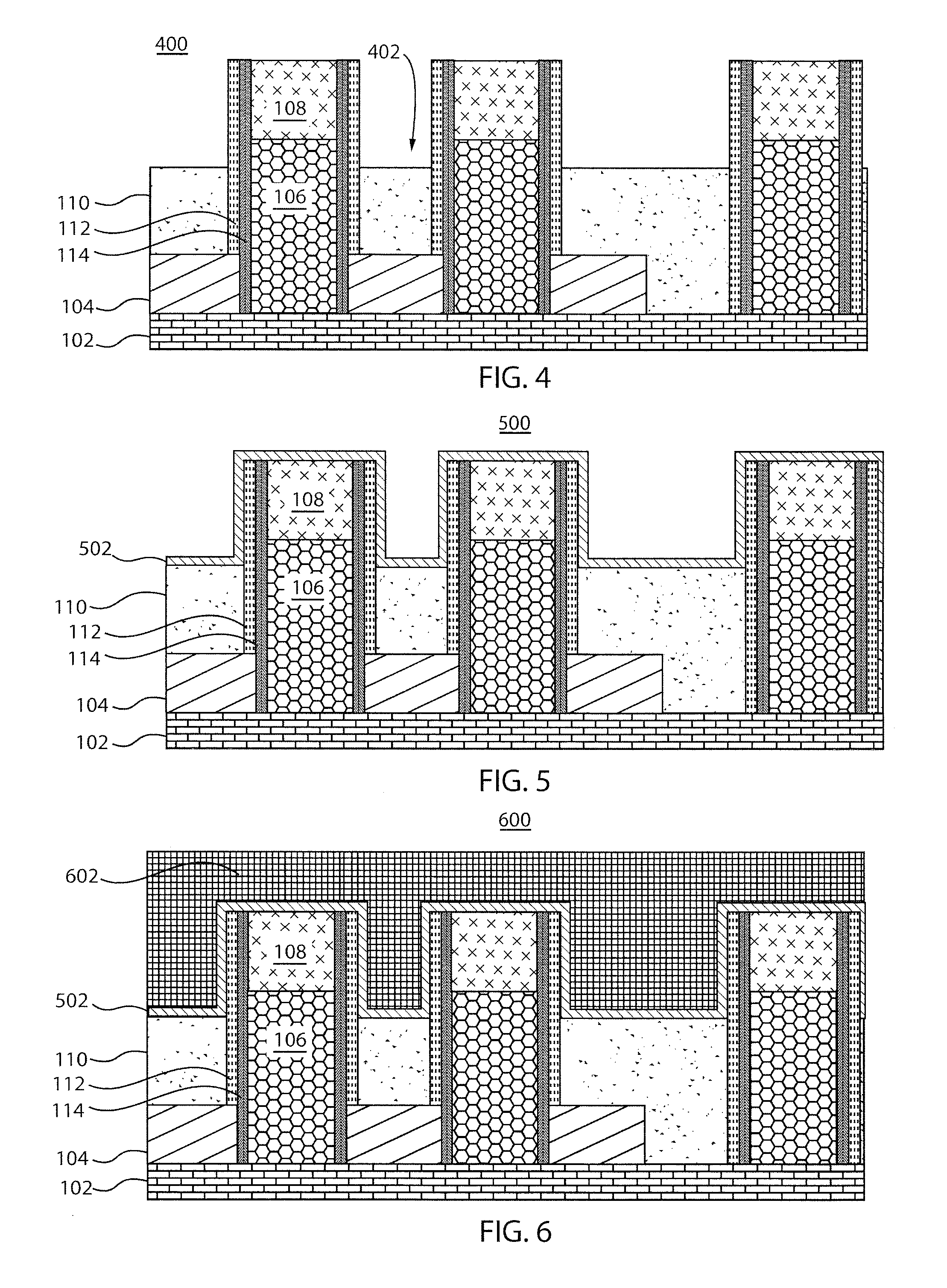Etch resistant barrier for replacement gate integration
a technology of replacement gate and barrier, which is applied in the field of barrier employed in the fabrication of semiconductor devices, can solve the problems of difficult scheme and poor wet etch resistance of oxid
- Summary
- Abstract
- Description
- Claims
- Application Information
AI Technical Summary
Benefits of technology
Problems solved by technology
Method used
Image
Examples
Embodiment Construction
[0029]Embodiments of the present principles are directed to facilitating the fabrication of CMOS devices. For example, the embodiments described herein provide substantial advantages and benefits for replacement metal gate fabrication schemes. As noted above, if RMG schemes are employed to fabricate small scale devices, a gap filling layer that has a high aspect ratio and exhibits wet etch resistance properties as well ease of application should be applied between the gates prior to performing contact etching.
[0030]As also noted above, one method of fabricating CMOS devices caps the gap fill oxide with an HDP process. However, this approach has several disadvantages. For example, the aspect ratio of the gap fill layer is limited to 4:1, beyond which it is increasingly difficult to maintain a gap fill material that is free of defects using HDP. Even at the 4:1 aspect ratio, the gap filling process requires a large number deposition and etch cycles when HDP is employed. The large numb...
PUM
 Login to View More
Login to View More Abstract
Description
Claims
Application Information
 Login to View More
Login to View More - R&D
- Intellectual Property
- Life Sciences
- Materials
- Tech Scout
- Unparalleled Data Quality
- Higher Quality Content
- 60% Fewer Hallucinations
Browse by: Latest US Patents, China's latest patents, Technical Efficacy Thesaurus, Application Domain, Technology Topic, Popular Technical Reports.
© 2025 PatSnap. All rights reserved.Legal|Privacy policy|Modern Slavery Act Transparency Statement|Sitemap|About US| Contact US: help@patsnap.com



